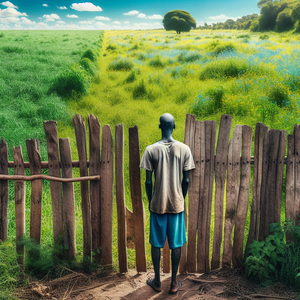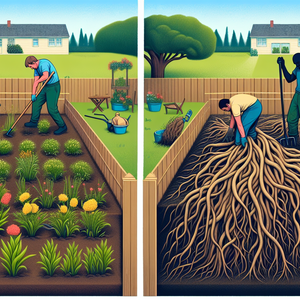Restoring Stories Through Feathers and Fur: The Art of Taxidermy Restoration

Every taxidermy piece is a vessel for a story. Whether it’s a mounted bird from the Victorian era or a family’s cherished preserved pet, these specimens carry layers of meaning, history, and emotion. A restorer’s job is to uncover and protect those narratives. For example, consider a faded bird with brittle feathers, once part of a 19th-century natural history exhibit. Such a specimen isn’t merely an object—it represents the age of exploration, a time when scientists and adventurers sought to document the natural world’s marvels. Restoring it requires more than technical skill; it requires research into its origin. Where was the bird collected? Who mounted it, and for what purpose? By answering these questions, the restorer breathes life into a forgotten chapter of history. Similarly, a mounted fox from a Victorian home isn’t just a decoration. It’s a relic of a time when people brought symbols of the natural world into their domestic spaces, reflecting their fascination with nature and their artistic sensibilities. Restoring such a piece means more than fixing its faded fur—it means preserving the cultural context and artistic intent behind it, ensuring that it continues to tell its story to future generations.
The Challenges of Restoration
Taxidermy restoration is not without its challenges. Time, inevitably, takes a toll. Feathers fade under UV light, fur becomes brittle with age, and the internal structures that support specimens deteriorate. A restorer must approach each project as a puzzle, balancing the need for historical accuracy with modern conservation techniques. One of the most unique tools in a restorer’s arsenal is the fountain pen. This seemingly traditional instrument allows for unparalleled precision in recreating patterns, textures, and details. For instance, a fountain pen can be used to replicate the intricate shading of a bird’s beak or the subtle lines of a mammal’s fur. This tool, combined with a deep understanding of anatomy, chemistry, and art, allows the restorer to work with extraordinary detail and care. Eco-conscious practices are also becoming central to taxidermy restoration. Restorers are increasingly choosing sustainable materials and avoiding harmful chemicals, ensuring that their work aligns with the respect for nature that their specimens represent. This philosophy underscores the deeper purpose of their craft: to honor and preserve the natural world, not harm it further.
Emotional Connections to the Work
For many taxidermy restorers, the work is more than just a technical challenge—it’s an emotional journey. Each specimen they handle once lived, moved, and breathed. It belonged to a world of forests, skies, or waters, and it touched lives in ways that often go beyond words. One restorer shared the story of restoring a family’s beloved Labrador retriever named Max. The lab had been preserved decades earlier, but time had taken its toll. The family, eager to preserve the memory of their faithful pet, entrusted the restorer with the delicate task of bringing Max back to his former glory. The project required not only technical skill but also empathy for the family’s emotional connection to the mount. When the restoration was complete, the family’s tears of gratitude underscored the profound impact of this work—not just on the specimens themselves but on the people who cherish them.
The Blend of Art and Science
Taxidermy restoration is a craft that demands both artistic talent and scientific expertise. A restorer must understand the biology and anatomy of the animal they’re working on, from the structure of its bones to the patterns of its fur or feathers. They must also have a strong grasp of chemistry to ensure that their materials and techniques stand the test of time. At the same time, the work requires artistic skills like sculpting, painting, and shading. A restorer must be able to replicate the natural beauty of an animal with such precision that the restoration is seamless. Every stroke of the fountain pen, every carefully placed feather or strand of fur, is an act of devotion—a tribute to the animal’s life and the story it carries.
Taxidermy restoration is more than a profession; it’s a calling. In the hands of a skilled restorer, feathers and fur become threads that connect the past to the present. These restorers ensure that the stories tied to each specimen—stories of exploration, artistry, and personal connection—are not forgotten. In a world that often prioritizes the new over the old, taxidermy restorers remind us of the value of preservation. Each restored specimen is a testament to the beauty of nature, the ingenuity of human craftsmanship, and the enduring power of memory. By preserving these pieces, restorers teach us to cherish the past, honor the natural world, and find meaning in the act of restoration itself.
Conservation Specialist (Natural History Collections)
Museums (e.g., Smithsonian Institution, Natural History Museum of London), universities, and private archival firms
Responsibilities
Preserving and restoring natural history specimens, such as taxidermy mounts, fossils, and botanical collections, using conservation-grade materials and techniques.
Requirements
Expertise in environmental monitoring, preventative conservation, and stabilization of fragile specimens.
Strong background in natural sciences (zoology, biology) and fine arts.
Familiarity with museum standards like those outlined by the American Institute for Conservation (AIC).
Wildlife Anatomical Illustrator
Publishing houses, wildlife organizations (e.g., National Geographic, WWF), and educational institutions
Responsibilities
Creates scientifically accurate illustrations of wildlife anatomy for educational materials, conservation projects, and museum exhibits.
Requirements
Proficiency in traditional and digital art techniques, with a focus on rendering intricate anatomical details like musculature, feather patterns, and fur textures.
Knowledge of animal physiology.
Ability to collaborate with researchers and biologists to ensure accuracy.
Historical Artifact Restorer (Specializing in Delicate Materials)
Historical societies, museums, and private collectors
Responsibilities
Restores and conserves artifacts made from fragile, organic materials such as feathers, fur, leather, and textiles.
Combines chemical expertise with artistic skills to repair and stabilize materials that have deteriorated due to age, light exposure, or environmental factors.
Requirements
Background in material science, conservation, and historical research to ensure authenticity and longevity of restorations.
Taxidermy Artist (Specializing in Ethical Practices)
Wildlife education centers, custom taxidermy studios, and film/theater production companies
Responsibilities
Focuses on creating lifelike taxidermy displays for educational, artistic, or personal purposes, often using ethically sourced specimens.
Requirements
Expertise in anatomy, sculpting, painting, and habitat design to produce realistic and dynamic displays.
Familiarity with local wildlife laws and regulations to ensure compliance with ethical and legal standards.
Museum Exhibit Designer (Natural History Focus)
Natural history museums, science centers, and traveling exhibition companies
Responsibilities
Designs and curates engaging exhibits that showcase taxidermy specimens and other natural history artifacts.
Collaborating with scientists and artists to develop accurate, immersive displays that educate and inspire visitors.
Requirements
Background in exhibit design, storytelling, and knowledge of display technologies (e.g., lighting, climate control) to protect delicate specimens.


